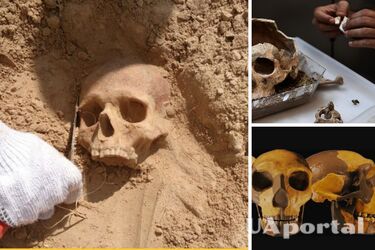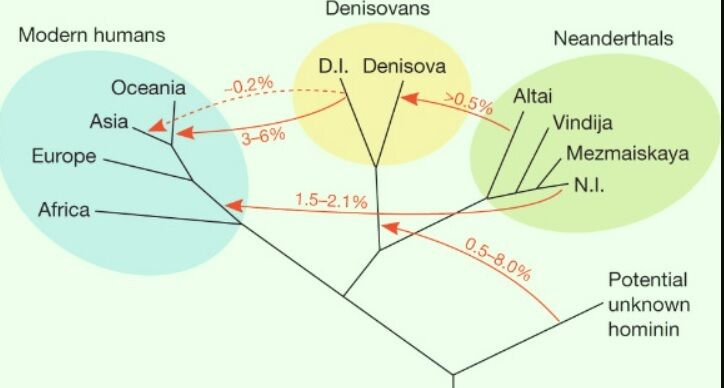Strange skull found in China, hundreds of thousands of years old (photo)

Scientists in China have found a 300,000-year-old skull that is unlike any archaeologists have ever found. An international team of scientists has described an ancient human fossil in China that is unlike any other hominin ever found before.
These remains do not resemble any lineage that split into Neanderthals, Denisovans, or modern humans, suggesting that our current version of the human family tree needs a different branch, the scientists write in a study published in the Journal of Human Evolution.
It is noted that the jaw, skull, and leg bones belonging to this still "classified person," designated as HLD 6, were found in Hualundong in East Asia back in 2019. Since then, experts at the Chinese Academy of Sciences (CAS) have been trying to match the remains to a known origin.
Read also: Archaeologists discover huge sword and bronze mirror in 4th century Japanese burial site
The hominin face has a similar structure to that of the modern human lineage, which split off from Homo erectus 750,000 years ago. But the absence of a chin is more similar to that of Denisovans, an extinct species of ancient man in Asia that split off from Neanderthals more than 400,000 years ago.

Working together with researchers from China's Xi'an Jiaotong University, the University of York in the UK, and Spain's National Research Center for Human Evolution, the CAS researchers believe they have discovered a completely new lineage - a hybrid between the branch that gave us modern humans and the branch that gave us other ancient hominids in the region, such as Denisovans.
Historically, many of the Pleistocene hominid fossils found in China did not fit into any lineage. As a result, such remains are often explained as intermediate variations on the direct path to modern humanity; as an archaic example of Homo sapien, for example, or an evolved form of Homo erectus.

"But this rather linear, simplistic interpretation is controversial and not widely accepted. While Homo erectus existed in Indonesia until about 100,000 years ago, the remains recently found in eastern China bear more resemblance to other, more modern hominin lineages," the publication says.
Previously, genome studies of Neanderthal remains in Europe and West Asia have found evidence of a fourth hominin lineage living in the Middle and Late Pleistocene. But this vanished group has never been formally identified in the fossil record.
Perhaps the recent human remains found in China are the missing piece of the puzzle.
Scientists have found that the fossilized jaw and skull belong to a 12- or 13-year-old adolescent, and while his face has features similar to modern humans, his limbs, skull, and jaw "seem to reflect more primitive features."

Read also: In Germany, an entrance to a cave was found, which no one entered for 16 thousand years (photo)
The authors of the analysis note that the mosaic of physical features of this ancient hominin confirms the coexistence of three lineages in Asia - the H. erectus lineage, the Denisovans lineage, and this other lineage that is "phylogenetically close" to us.
Homo sapiens appeared in China only about 120,000 years ago, but it seems that some of our "modern" traits existed here long before that. It is possible that the last common ancestor of H. sapiens and Neanderthals originated in southwest Asia and later spread to all continents.
This theory will now need to be confirmed by additional archaeological research.
As a reminder, the skeleton of a man who was executed by Catherine's wheel was discovered in Milan.
If you want to get the latest news about the war and events in Ukraine, subscribe to our Telegram channel!
